This deliciously crunchy, buttery oatcakes recipe is made in true Cape Breton style. Serve with plenty of butter, cheese, or jam and a cup of hot tea to dunk!
Table of Contents[Hide][Show]
Traditional Cape Breton recipes
‘The Scots’, observed G. Bisset-Smith in 1907, ‘are a notoriously migratory people’.
In the 19th century, nearly three-quarters of emigrant Scots (nearly 900,000 souls) crossed the Atlantic hoping for a better life in the Americas. Until 1847 more Scots went to Canada than anywhere else.
They also took with them recipes from their homeland; recipes which have been passed down generation to generation.
This Cape Breton oatcakes recipe is one of them.
Ingredients needed to make Cape Breton oatcakes
- 1.5 cups/ 150 grams quick cook porridge oats – if your oats are too large, blitz them in a food processor for a few seconds to make them smaller.
- 1.5 cups/ 250 grams plain flour/ all purpose flour
- 0.5 cups/ 135 grams granulated sugar
- 0.5 cups/ 110 grams dark brown sugar
- 0.5 tsp baking soda
- 1 cup/ 225 grams butter
- 3 tbsp full-fat milk
Click here for the printable recipe.
How to make Cape Breton oatcakes
- Place the porridge oats, flour, sugars and baking soda in a large bowl.
- Rub the butter in with your fingertips until it resembles coarse breadcrumbs.
- Stir in the milk. Form the dough into a ball.
- Liberally dust your work surface with flour and roll the dough out to between 0.25 and 0.5-inch thickness. The dough is sticky so you might need to dust the top of the dough a few times with more flour as you roll.
- Cut into rounds using a cookie cutter, or use a knife and cut the dough into squares. Transfer to a baking sheet lined with baking paper.
- Bake in a preheated 400 F/ 200 C/ 180 C fan oven for 10-15 minutes, checking after 10 minutes to make sure they’re not browning too fast. Transfer to a wire rack to cool completely and store in an airtight container.
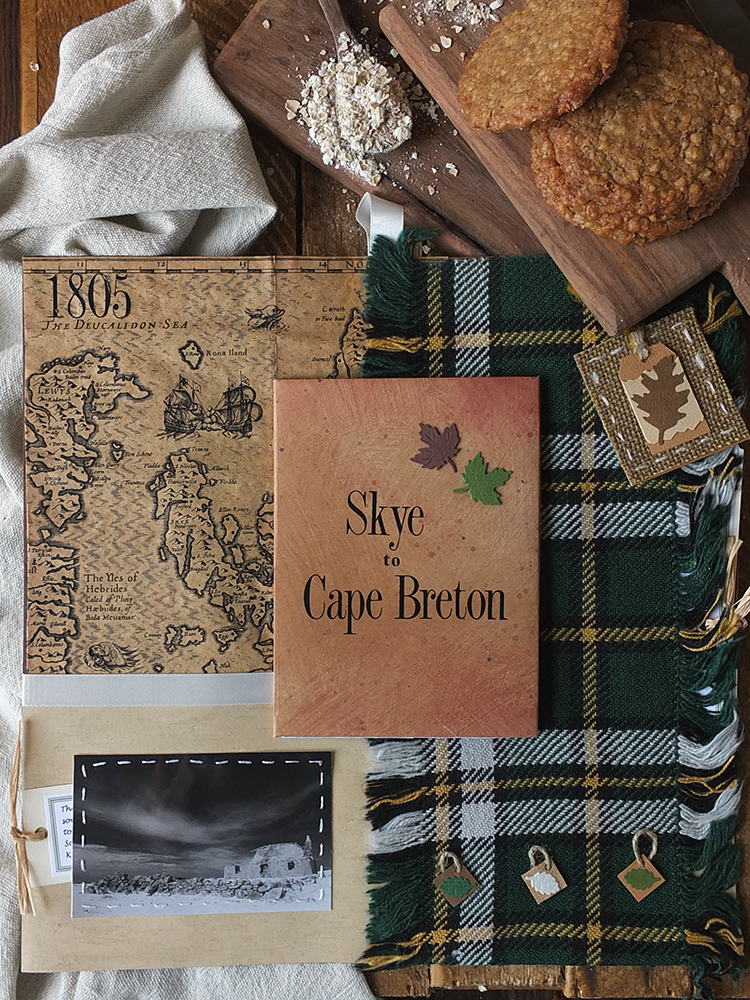
Cape Breton Genealogy
My family history involves quite a bit of travel back and forth across the big pond.
Some years ago, I went through a scrapbooking phase, and I began researching and telling my family history story in a scrapbook.
I made five pages, including a folded-out handwritten calligraphy family tree, before scrapbooking’s cost and time-consuming nature got the better of me.
The photos in this post are some of these pages.
1828 Isle of Skye to Cape Breton
My maternal lineage can be traced back to the Isle of Skye, where the baby Catherine McLeod, born in 1828, boarded a ship destined for Cape Breton Island along with her extended family, enduring an arduous 12-week ocean voyage to the new world.
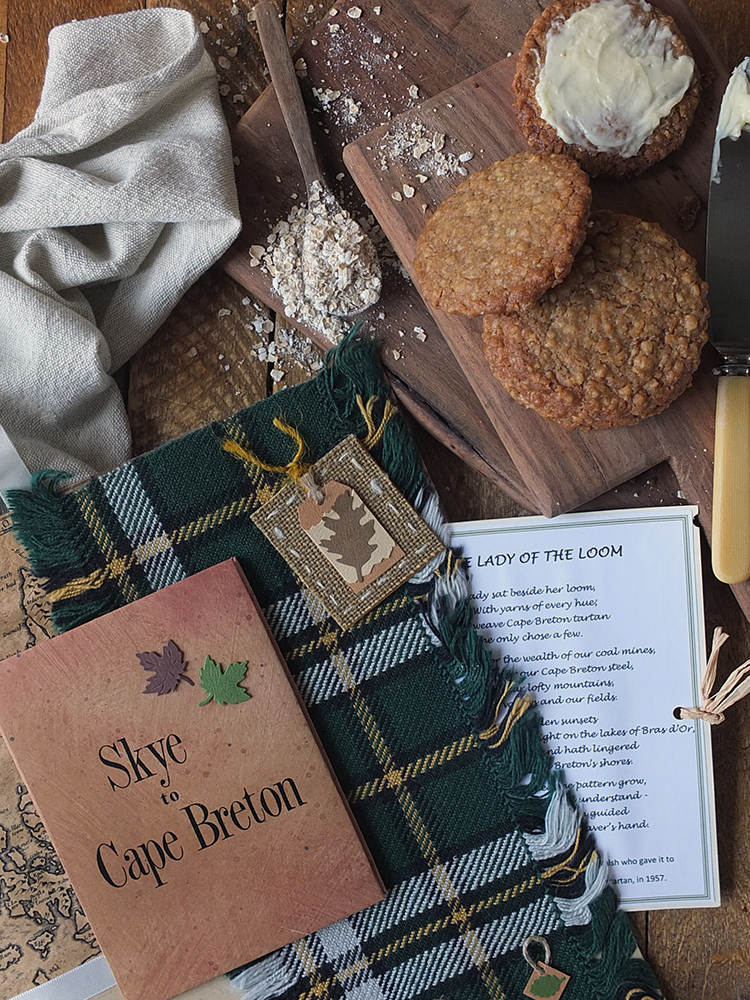
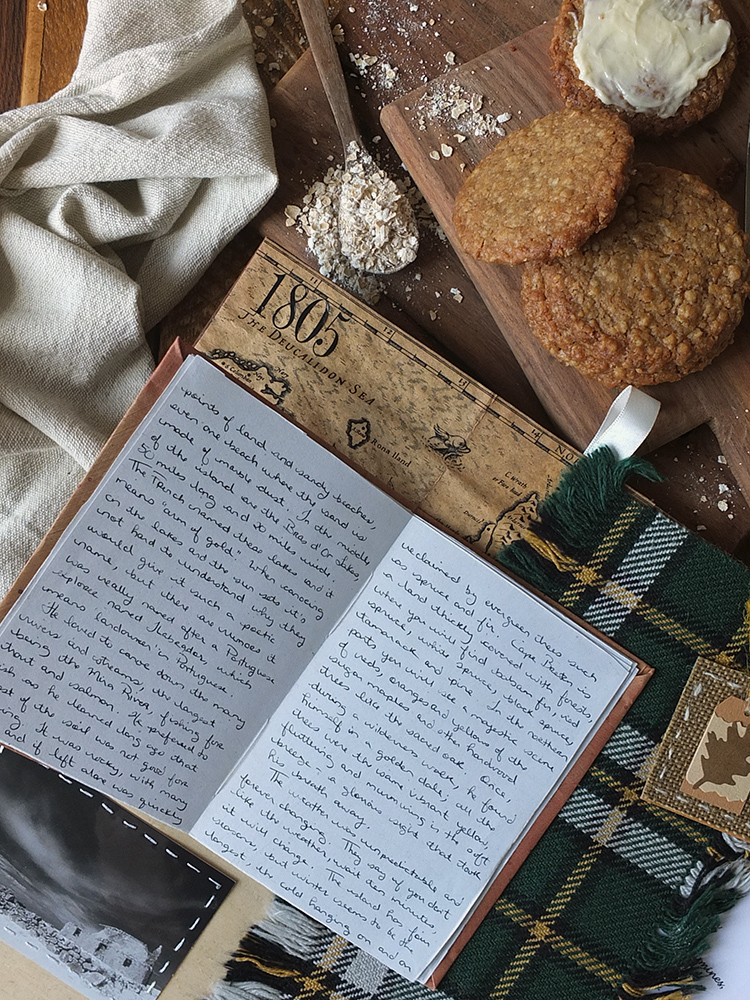
It was in Cape Breton where Catherine grew up and married Angus McIntosh, whose parents had also immigrated from Scotland in an earlier wave of migration, and they had children of their own.
Descendants of this marriage are joined by ‘home children’, children of the poor or orphans sent by British institutions to be raised in Canada.
1740 Captain John Hatfield & the American Revolution
In 1740 in Dorset, England, John Hatfield was born and, quite possibly, orphaned at a young age. He went on to become the famous Captain John Hatfield, Loyalist, an officer of the British Army who fought as Captain of the 3rd New Jersey Volunteers in the American Revolution.
Well, we all know how that story ended.
They lost the war and, facing exile, a convoy of 14 ships was loaded with 2000 Loyalists and their families in New York.
Hatfield and his wife and three young children set sail in the Spring of 1783 from Staten Island on the Two Sisters – destination – Nova Scotia (New Scotland) in Canada.
Captain John Hatfield’s great-great-grand-daughter Susan Amelia Pratt married Roderick MacIntosh, Catherine MacLean’s grand-daughter, bringing those two family trees together on Cape Breton Island.
1945 England during WW2 to Cape Breton
My maternal grandfather was a military man and spent much of his working years travelling. This included three years posted in Germany and a stint in England during WW2, where he met my grandmother, a bakery truck driver from Worthing, Sussex.
He brought her, as a young bride, back to Canada with him, as you do.
1953 Linlithgow, Scotland to Ontario, Canada
My paternal tree can only be traced as far back as 1698, and for seven generations nearly all the family members were born, and died, in or near Linlithgow, Scotland.
In 1953 my great-grandfather, sculptor Thomas Taylor Bowie, immigrated with his son to Ontario, Canada, sailing on Home Lines Atlantic.
The rest of the family followed two years later on Cunard’s Franconia.
My father, too, was a military man and it was on CFB Chilliwack, British Columbia, on the west coast of Canada where he met my mother. I was born and three years later we moved back to Cape Breton Island where I spent the rest of my childhood and I grew up a Maritime girl.
1999 Wanderlust and Immigrating to Scotland
By the age of 21, I started feeling a wanderlust for the other side of the Atlantic.
It took two months for me to get my UK Ancestry Entry Clearance Visa, meaning I could live and work in the UK for 4 years. It was remarkably easy to get – filling out a few forms and providing the appropriate documentation. The most difficult thing was getting my grandmother’s birth certificate from England. Given she had sadly passed away long before I was born, I never knew her and no one had any of her papers.
So it is here I find myself, on a wild, remote island archipelago in the North Atlantic, currently shrouded in a summer sea fog, with a family of my own which now includes genealogical branches into Sweden, Norway and Iraq.
I’m writing this, I’m eating oatcakes, and my passport with my Indefinite Leave to Remain Visa is stored safely for future travels.
My children, with dual UK-Canadian nationality, are free to move where they like. I wonder if they will return to Canada one day.
My first job, at the age of 14, was that of a tour guide at the old (by Canadian standards) Intercolonial Railway Museum in my rural village in Cape Breton. We had to show guests around the museum, demonstrate our Morse code skills on the telegraph machine and offer them snacks from the tea room – mainly tea and Cape Breton oatcakes (and slices of defrosted cream pies).
I didn’t bring a recipe for Cape Breton oatcakes with me when I moved back across the pond, but blogger Janine Kennedy, the author of Cooking with Craic, another ex-pat Cape Bretoner living on this side of the pond, did.
This is her version of her grandmother’s recipe, but UK-ified using grams, and with my own little tweaks. It has been shared with permission.
There’s a big difference between Scottish and Cape Breton oatcakes. Scottish oatcakes are made with oats, fat, salt and water, whereas Cape Breton oatcakes are loaded with sugar and taste like gorgeous, delicious oaty HobNob biscuits. They are rather moreish if I do say so myself!
Recipe Difficulty Levels
Easy
Requires basic cooking skills and ingredients you most likely already have in your kitchen.
Moderate
Requires more experience, preparation and/or cooking time. You may have to source special ingredients.
Challenging
Recipes requiring more advanced skills and experience and maybe some special equipment.
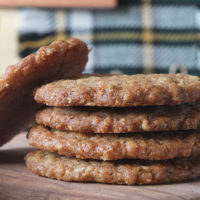
A Traditional Cape Breton Oatcakes Recipe
Ingredients
- 150 grams porridge oats
- 250 grams plain flour
- 135 grams granulated sugar
- 110 grams soft brown sugar
- 227 grams butter
- 0.5 tsp bicarbonate of soda
- 3 tbsp full fat milk
Affiliate Links
This recipe card may contain affiliate ingredient and equipment links. As an Amazon Associate I earn from qualifying purchases.
Equipment
Instructions
- Preheat oven to 400 F/ 200 C/ 180 C fan and line a baking tray with parchment paper.
- Measure out 150 grams porridge oats. I blitzed mine in my food processor for a few minutes for a finer texture. Combine with 250 grams plain flour, 135 grams granulated sugar, 110 grams soft brown sugar and 0.5 tsp bicarbonate of soda in a large bowl.
- Add 227 grams butter, cubed, and rub in with your fingertips until it resembles bread crumbs.
- Add 3 tbsp full fat milk and stir with a wooden spoon to combine well. You might need another tablespoonful of milk.
- Form mixture into a ball and liberally dust your work surface with flour.
- Roll the dough out gently until it is 1/2 thick. Cut with a round cutter or use a knife to cut into squares.
- Using a palette knife, carefully transfer the oatcakes to the baking tray.
- Bake for 10 – 15 minutes until light and golden. Check them after 10 minutes to make sure they’re not cooking too quickly.
- Transfer to a wire rack to cool completely and then store in an airtight container.
Video
Nutrition
Pin this recipe for later
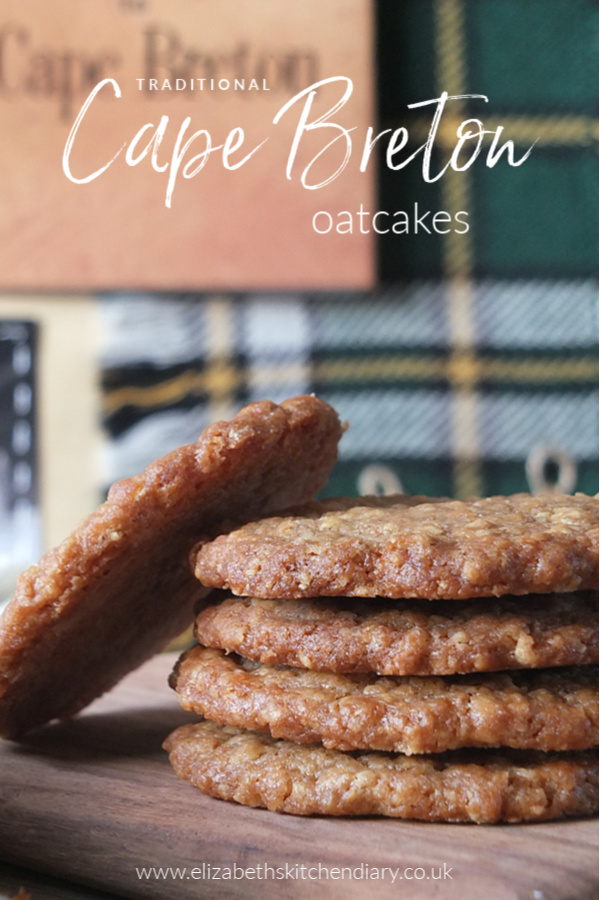
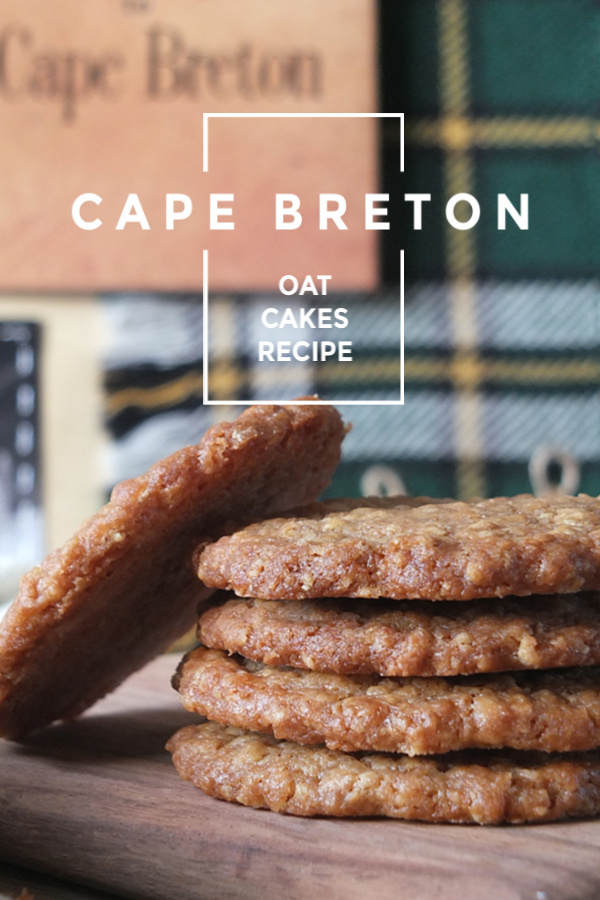
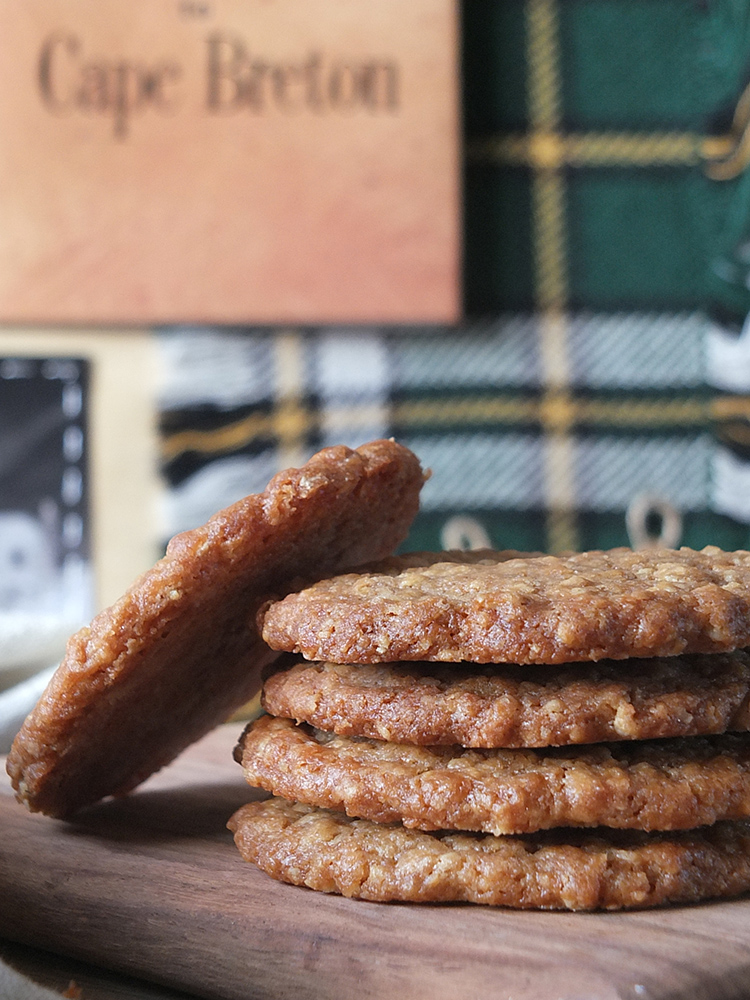
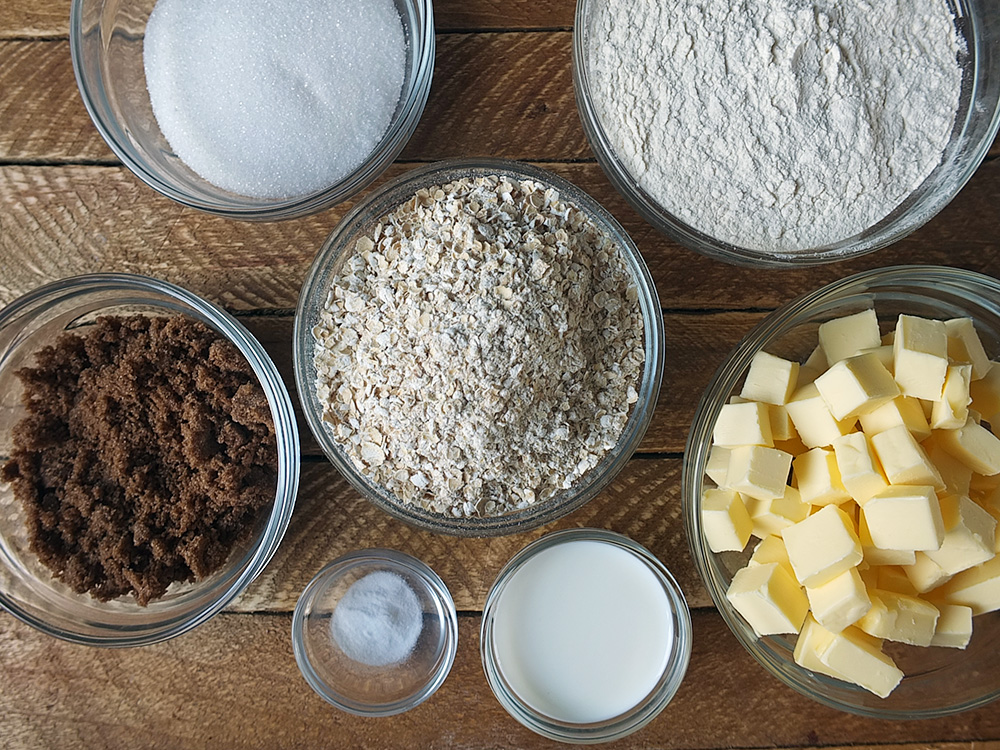
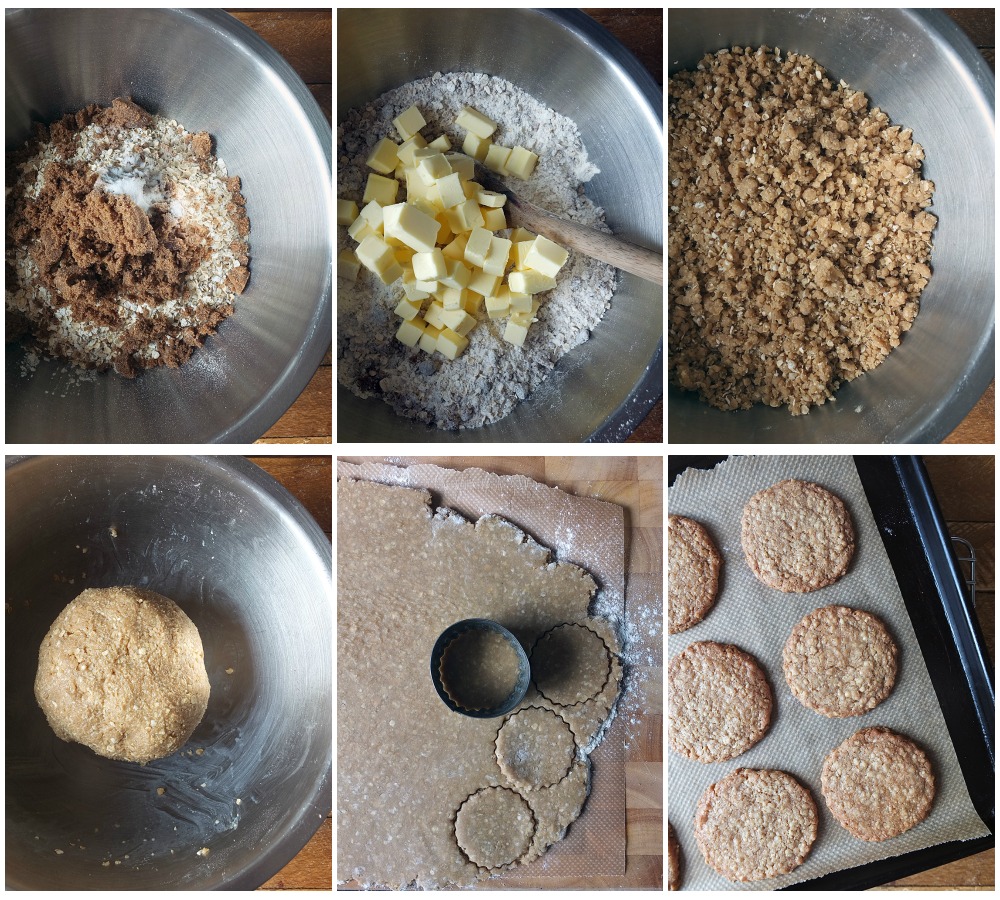
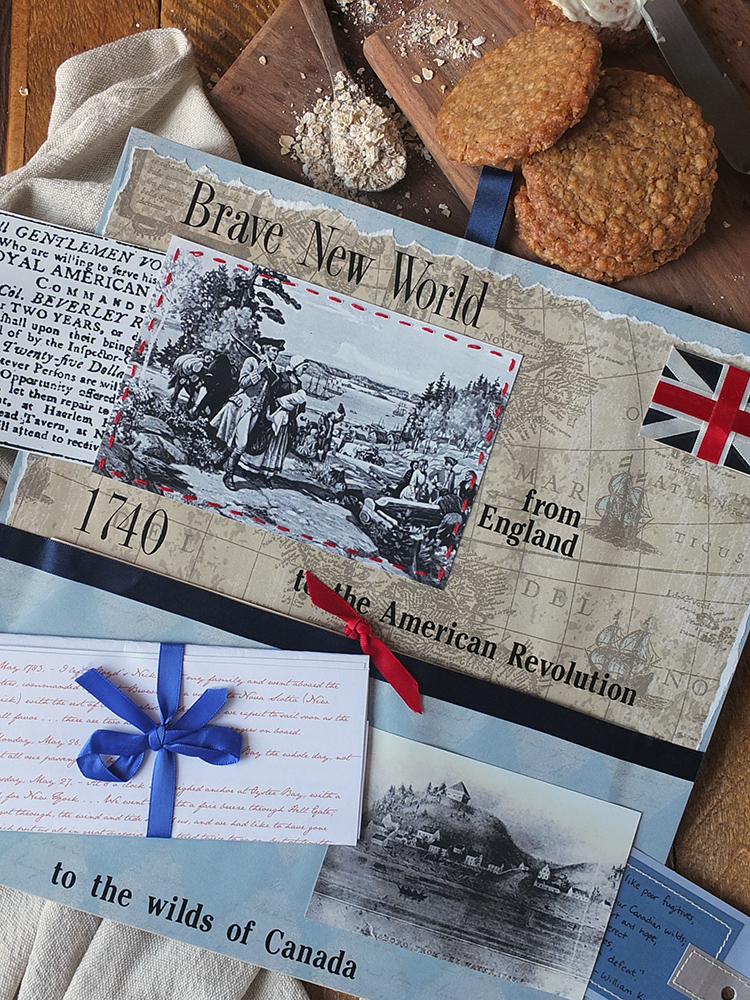
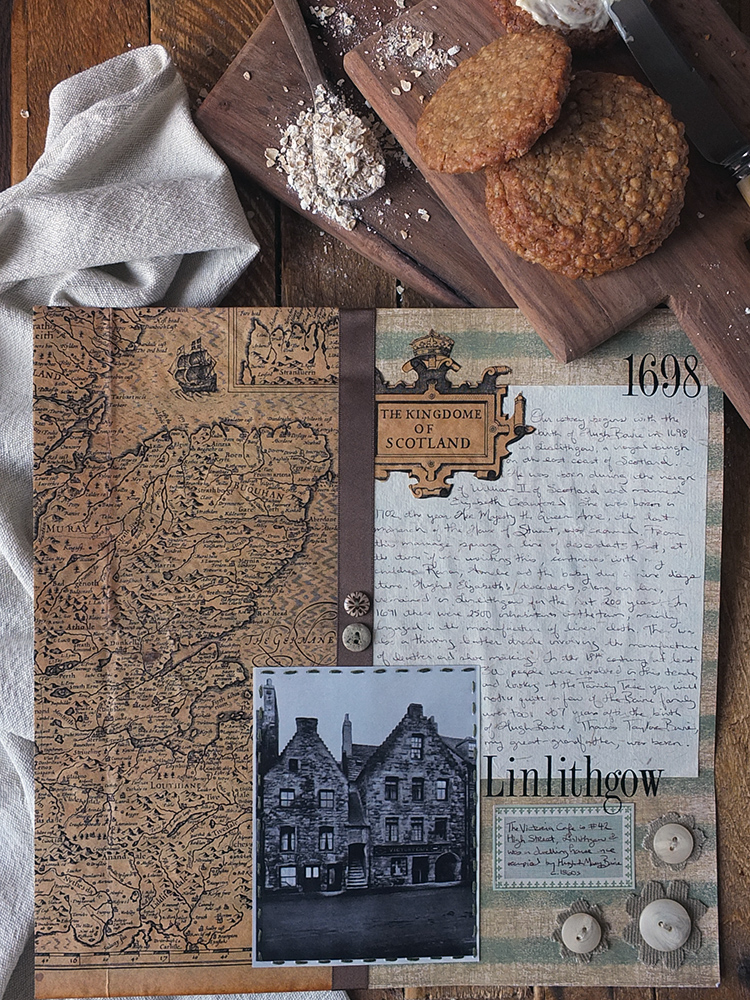
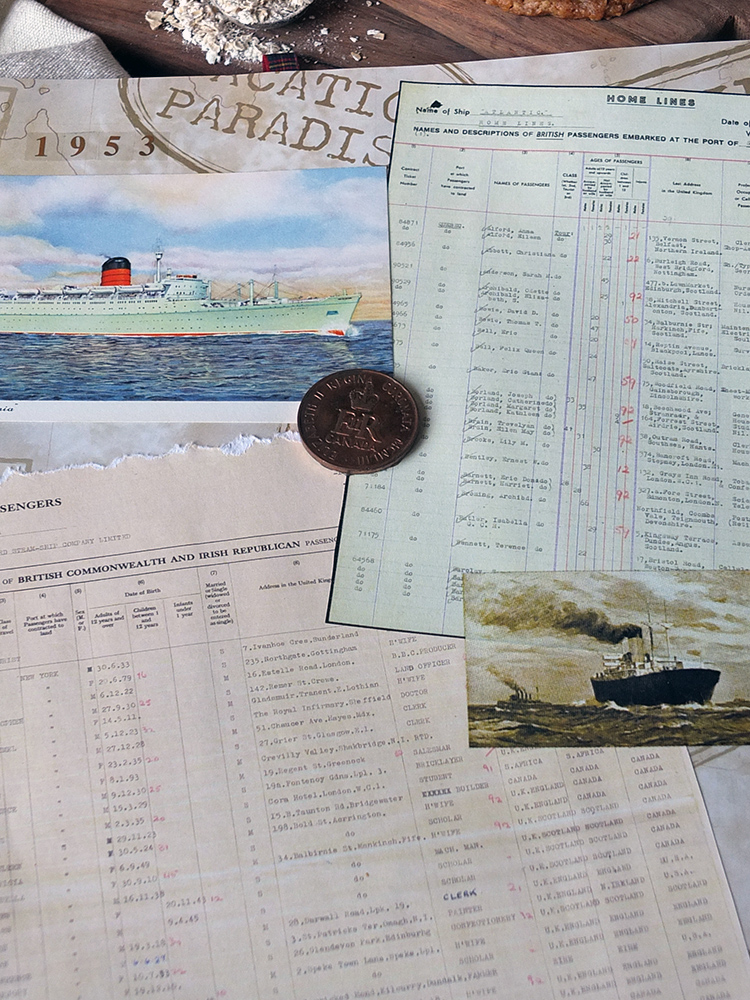
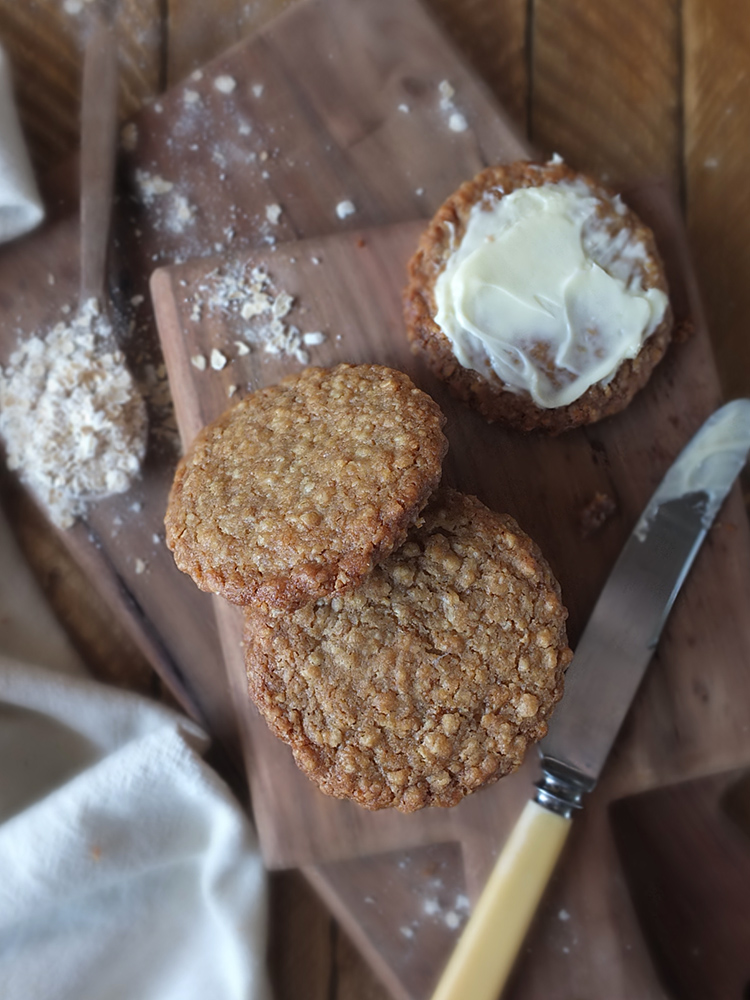
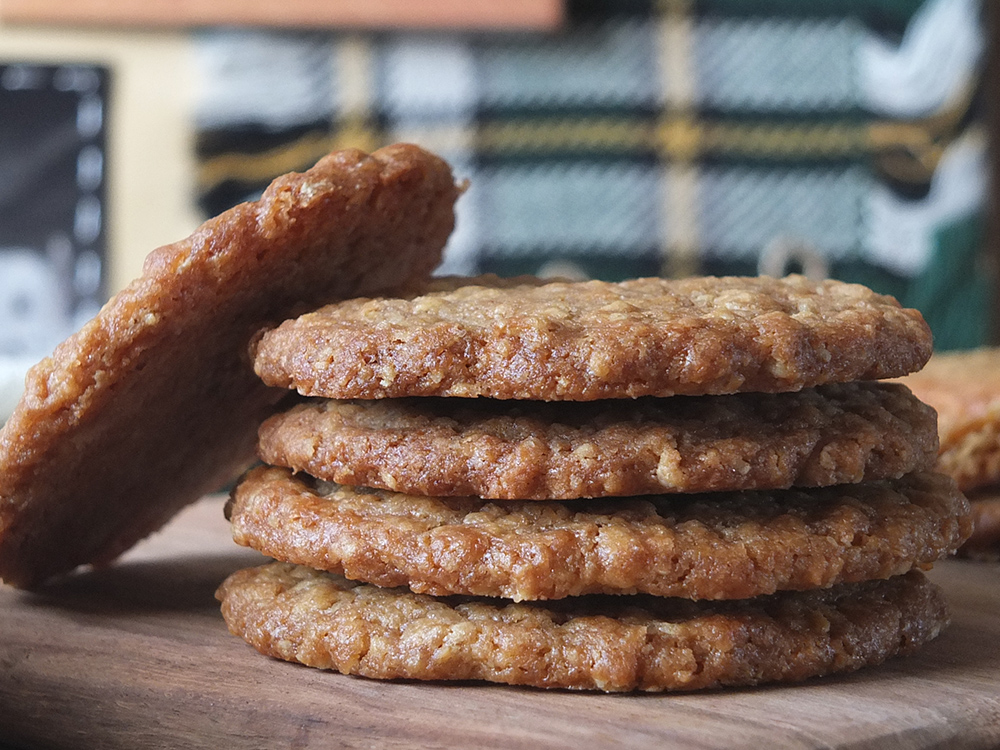
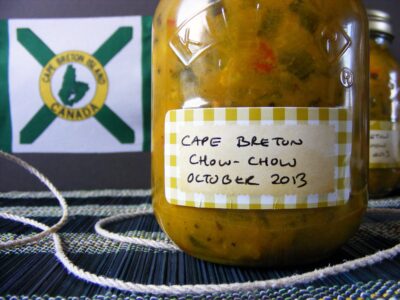
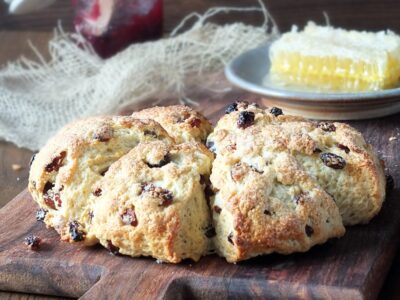
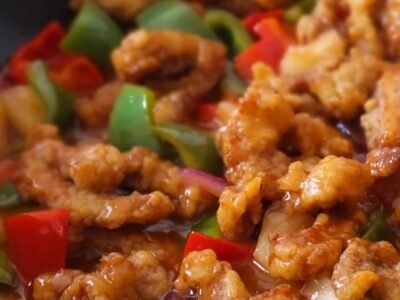
 Strawberry Milkshake Cupcakes
Strawberry Milkshake Cupcakes
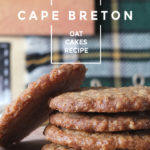
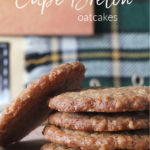
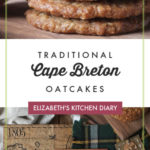
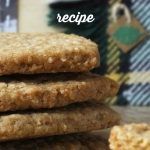
Is this similar to Effies Oatcakes? I adore those and am trying to figure out how to make them at home
Gosh – reminds me of my grandma – she loved her scotch porridge oats time to show the family what real oat cakes taste like
Hi Elizabeth.
This brings back great memories of staying with my gran as a kid. Oatcakes and welsh cakes were her speciality.
Oatcakes and a glass of milk.Nothing better.
I love the thought that has gone in to this post.
Thanks so much for sharing.
I’ve said it once and I’ll say it again. Oatcakes? MARRY ME! 🙂
Hahah! 🙂 Thank you!
What a beautiful story! And I really love these oatcakes!
Aw thank you, so glad you’ve enjoyed it 🙂
Looks delicious.
I like this oatcakes, looks very delicious, but also thank you for your story, thanks for sharing.
Thanks Joyce 🙂
As an expat myself I know how many Scots leave for work reasons too. You meet hundreds of them. You’ve really inspired me to do more about tracing my family tree. I started a while back but it’s VERY complicated!
All the more reason to get it down on paper (or digital!) – I hope you enjoy the adventure that is genealogy!
PS the Hobnob comparison was the clincher!
I prize my tatty, faded “indefinite leave to remain visa stamp in an old passport. Fascinating story, Elizabeth, and a recipe I am bookmarking to make very very soon. Maybe this weekend. I love homemade oatcakes and haven’t come across this kind of recipe before. Thanks for writing this. I am a bit nervous to explore my roots too far. I have Native American blood (Cherokee) so the history there with the European incomers/invaders is a bit tangled and tragic, so I don’t really know how my family fits in with that. I like to think it was a peaceful, loving union.
Great story, I also have scottish roots
Thanks for this fascinating post! The Cape Breton oatcakes look delicious. As soon as our heat wave ends and I can turn the oven on again I plan to try them, but with a gluten-free flour instead of regular.
Wow your family history sounds so interesting – wouldn’t it be great to have the time and money to keep doing your scrapbooking as the pages you did look wonderful. And those cape breton oatcakes seem such a lovely way to tie together your Scottish and Canadian heritage
Wow, how wonderful to know so much about your family history – I know virtually nothing about my father’s side and not a huge amount on my mother’s side either. I do love a good Scottish oatcake, but your sweet Cape Breton ones sound rather good too.
I love the look of those oatcakes. And what a fascinating family history – you people have really been going back and forth across the pond!
I too have a connection to Skye. It’s so fun to look back into our ancestors stories and see how it all came about. I enjoyed your story and the delicious recipe.
Thank you Diane, so glad you enjoyed my post. 🙂
The oatcakes look delicious ! And I love finding and exploring new sites – Lebara looks very interesting !
Thanks Linda 🙂 Lebara is on to something with their whole connecting migrants ethos, I think. They are a wealth of information!
Looks like a fantastic recipe and fun post!
Thanks Jillian – I really enjoyed writing it! 🙂
What a wonderful post that brightened my day! I love reading about someone’s family history! Great recipe which is now on my list as Chef Georgio aka hubby was born in Scotland too!
Aw thank you! So glad I helped brighten your day – thanks for making me smile! 😀
What a great story with accompanying recipe; love this!
Thanks Dan, glad you liked! 🙂
What a wonderful post. I giggled when I ready you ONLY able to trace your ancestry back to the 1600’s – I think that’s incredible! The crackers look delicious and I really enjoyed the read.
Heehee, I suppose that is something special! I’ve grown so used to things being old in Shetland (ie: 2000 year old ruins), unlike Canada where anything 100 years old is ancient!
I loved reading about your family’s history! The oatcakes sound delish too!
Thanks Becky – I really enjoyed researching it!
Oh, that is so interesting Elizabeth!! I love family stories like this!! I’m in a process of turning our family tree into digital / online version… our family branches spread all over the World… on all continents except for Australia, but I may be wrong 😉 Thanks for the link to Lebara community, found lots of useful info there.
I’m sure it’ll be a fantastic story to tell once you get all the branches organizes, Margot. I am fascinated by family history too, and glad you found the Lebara link useful!
Dear Elizabeth, What a great post and recipe. I thoroughly enjoyed reading. xo, Catherine
Thank you Catherine 🙂
Such a lovely story of your family and a fantastic sounding recipe to stumble on today. Fabulous read, thanks for sharing.
Heidy L. McCallums
Aw thanks Heidy! So glad you enjoyed it!
Fantastic story, love your recipe for the oatcakes, have to try them! Nettie
Thanks Nettie – and do try the oatcakes! They are rather lovely for sure!
Very interesting story and the oatcakes look delicious too! Thanks for sharing the recipe, I must try! x
Thank you, I’m glad you found my story interesting. I really enjoyed researching it too – I need to keep working on this scrapbook!
I enjoyed reading this post, thanks for sharing your story. Now I need some milk to go with these yummy oatcakes!
I realised, post photography, that was what was missing from the pictures! Ice cold milk!
Thanks for the wonderful read and sharing a bit of your story with us. How fascinating! Those scrapbooks look gorgeous – as does this recipe!
So glad you enjoyed it Kelly – I’m overwhelmed by the positive feedback from it!
These oatcakes look fabulous! And, what a fun story and post. I love that you are researching your family!
If I am to be honest, it was mostly all done by other family members – I’d just collected together what they had found. Fascinating stuff! 🙂
What a great history you have. My grandfather was Scottish and maybe because of my heritage is why I migrated from England to America some years ago. Lovely post.
There is always a lure across oceans, isn’t there. We folk like to wander!
What a great story! I love reading about family history 🙂
I have never had an oat cake, but this is definitely making me want to try one.
Thanks Danni! 🙂
What a fascinating read about your geneology Elizabeth and for once I’m more interested in your story than the recipe even though your oat cakes do indeed look exceedingly moreish:-)
Aw thanks Camilla! So glad you enjoyed reading it. I really enjoyed writing it!
How wonderful. Even if incomplete that scrapbook is such a wonderful treasure! And I’d love to try making these oatcakes!
I will finish it one day, I think, when I have a bit more time to spare! 🙂
What a beautiful post , I would love to try these
Aw thank you! 🙂 I urge you to try the recipe – you won’t be disappointed!
Researching ancestry can be enlightening! “Rather moreish…” — I adore that phrase!
There are so many intriguing stories, I think, in each family. It’s wonderful learning about them!
There is nothing more delicious than a Cape Breton oat cake! They are home in one yummy bite 🙂 Loved reading about your family history – very cool you have been able to trace your ancestry.
Heehee, for sure Meaghan! Glad you liked the post! 🙂
So – are Cape Breton Oatcakes more of a treat then their Scottish alternative? When I think of the Scottish type – I think of them as cheese biscuits! Are Cape Breton ones to be eaten as a sweet biscuit?
Cape Breton oatcakes are definitely more cookie/sweet than their Scottish counterparts. I only really started eating oatcakes in Scotland – with mackerel pate! I’d never eat mackerel pate with this Cape Breton version!
This is a lovely blog post and the Cape Breton Oatcakes looks lovely x
Thank you Nicki! 🙂
This version of oatcakes sound delicious! I love your pictures in this post they’re so pretty and well thought out – I need to take note ha! Great family history, you’ve traced them really far back!
Aw thanks Chrissie! It took me awhile to figure out how I was going to approach this commissioned post, and when I remembered my scrapbook everything fell into place. 🙂
How exciting to be discovering your roots! I am 1/8th Scottish and would love to learn more about my heritage.
There are so many genealogical resources online – you’ll be surprised how easy it is once you get started! Go for it!